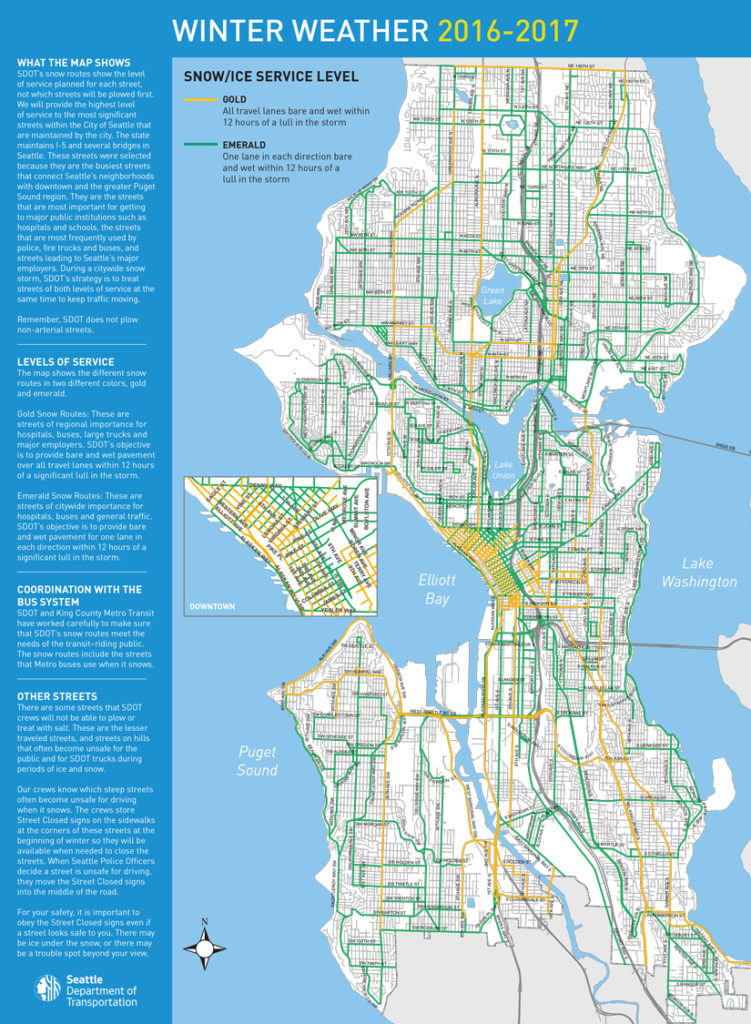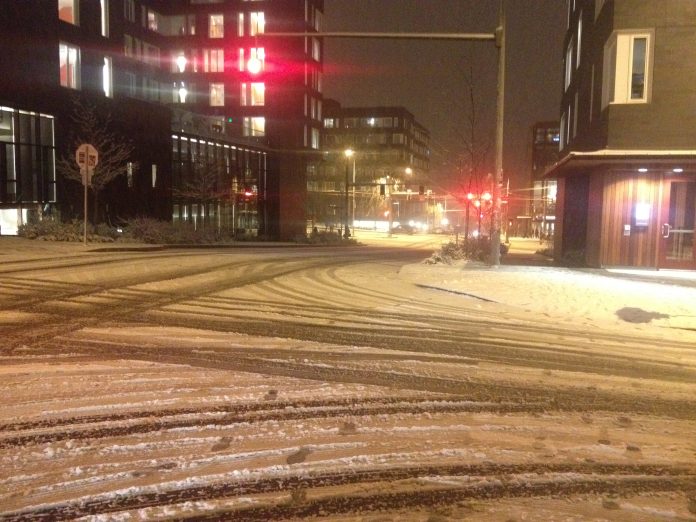The Seattle Department of Transportation (SDOT) has published their 2016-2017 Winter Weather Response Map, which shows corridors that will plow during snow and ice storms. Corridors are grouped into two categories: Gold and Emerald. Gold corridors are treated within 12 hours of a lull in the storm with all lanes meeting a bare and wet standard. Emerald corridors are treated on the same timeline, but only one lane in each direction must meet the bare and wet standard.

Most north-south streets in Downtown and key corridors connecting neighborhoods (e.g., Spokane Street, Aurora Avenue, Lake City Way, and Rainier Avenue) are designated at the Gold standard. Other major and minor arterials–the lion’s share of the designated streets–are designated at the Emerald standard. SDOT notes that primary distinction between the two is that Gold corridors are streets with regional significance whereas the Emerald corridors serve more as streets of citywide importance. In choosing the type of streets to be designated, SDOT considered the need for regional and local bus service, hospital access, major employers, and truck routes.
Streets not designated on the map are out of luck. Road crews generally do not plow non-arterial streets, and some arterial streets that are too steep simply cannot be treated.
Stephen is a professional urban planner in Puget Sound with a passion for sustainable, livable, and diverse cities. He is especially interested in how policies, regulations, and programs can promote positive outcomes for communities. With stints in great cities like Bellingham and Cork, Stephen currently lives in Seattle. He primarily covers land use and transportation issues and has been with The Urbanist since 2014.


